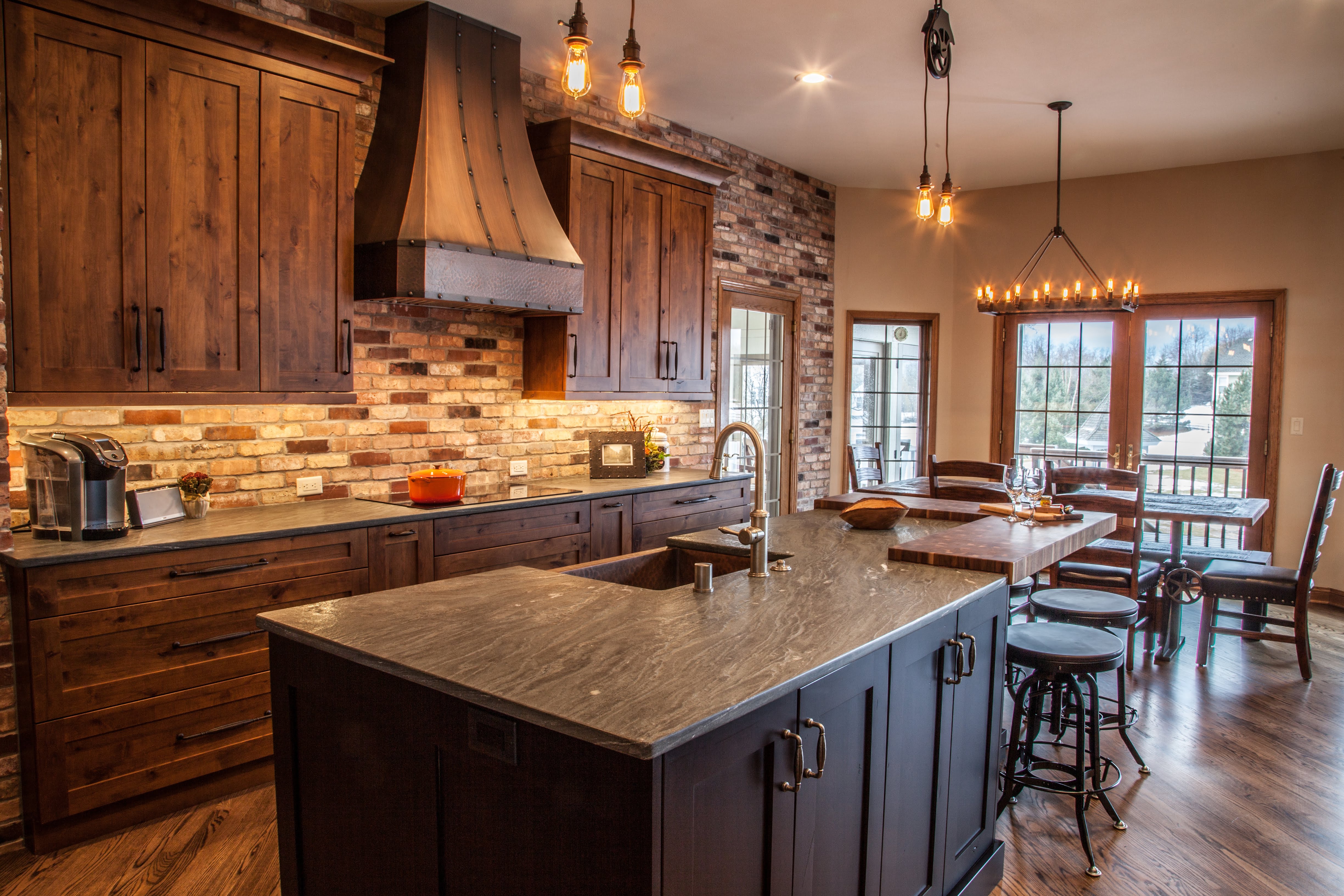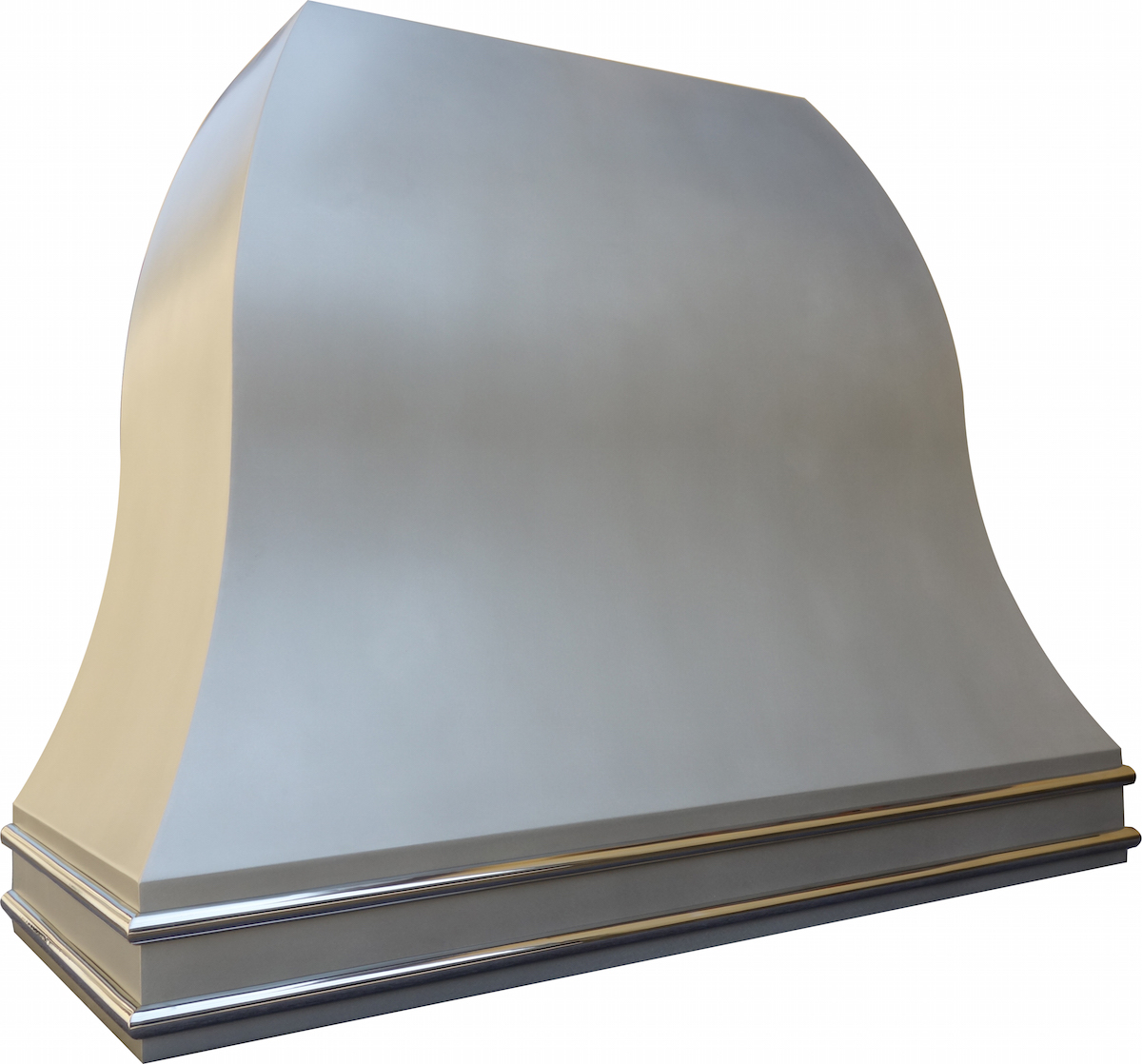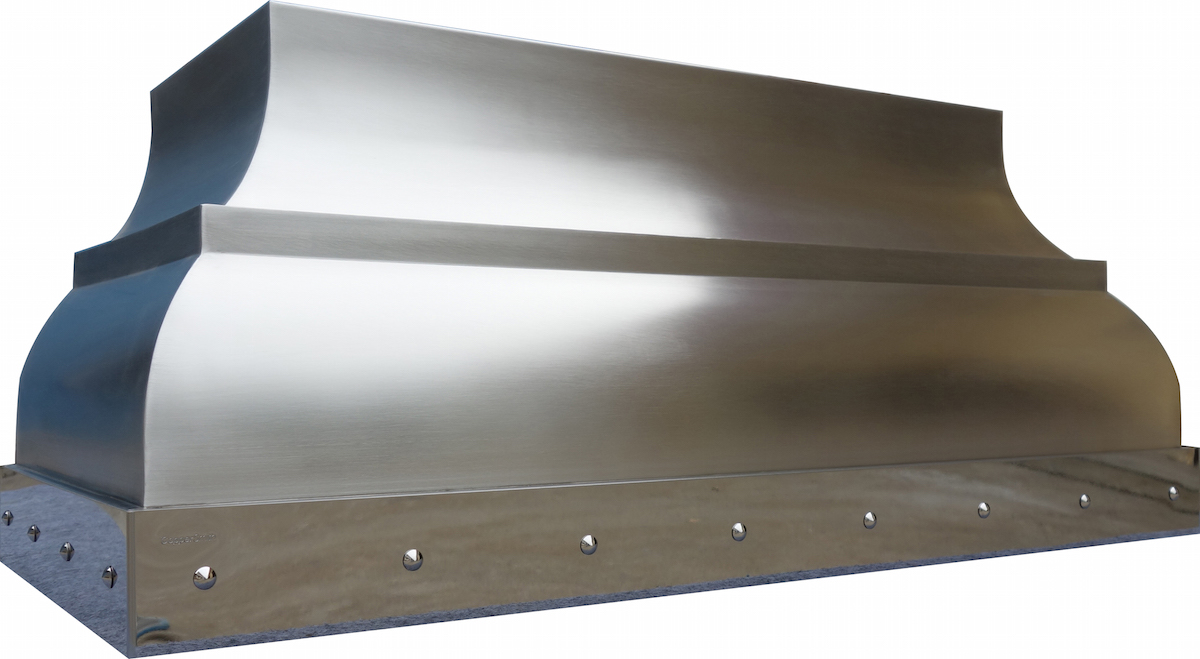
How Do I Select The Right Measurements For My Range Hood?
When buying copper stove hoods, you will need to have the right measurements before placing your order. How do you select the right measurements for your range hood? Hood measurements are broken down into three main parts including width, depth, and height. These measurements are listed in the following order: L" x W "x H", and can be found on each CopperSmith Range Hood product page.
To determine the proper width for your range hood:
- Measure the width of your cook-top and the available space between cabinets (if applicable).
- Match your hood width to the width of your cooktop to find the basic measurement.
These steps ensure that all of your burners will be covered when the hood is functioning. The width of the range hood typically matches the width of the cooking surface. If you have the room, or simply like the look of a wider hood, we recommend adding up to 3 inches on either side to create a larger capture area for air contaminants. You may add a total of 6 additional inches to the width of your hood.

Choosing the correct height is equally as important and ensures that your hood will look great and function optimally for your space. Your range hood height describes the distance between the cooktop and the bottom of the range hood. When choosing the height, it is important to consider where the base of your hood will sit when it is attached to the ceiling or cabinet. The space between the base of your cooktop and the bottom of your hood should measure between 30-36 inches.
When choosing the height of your range hood, consider the following:
- Where the base of your hood will sit when it is attached to the ceiling or cabinet.
- Allow 30-36 between the base of your cooktop and the bottom of your hood.
If you would like your hood to extend all the way to the ceiling, you can follow this basic formula to determine your hood height:
Ceiling Height (Minus) Countertop Height (Minus) 36 inches = Hood Height
You may use the same formula to find the height of an island mount hood, which requires the same space between the cooktop but will be attached from the ceiling. Island hoods hang freely without attachments to cabinets or walls and are generally in the center of the kitchen, located over a cooking or prep island.

Please note that we do not recommend hanging any range hood more than 36 inches above your cooktop, as hanging higher than the recommended height may affect the functionality of your hood and the warranty of your motor. CFM is also a factor when choosing the proper height for your hood. Choosing an insert with more power will allow you to hang the hood at the maximum height, while still capturing maximum smoke and grease while cooking. It is important to discuss CFM with your certified contractor or HVAC specialist to verify that your hood will be up to local code. Our CopperSmith design team can also assist you with questions concerning CFM and are happy to answers any questions you may have. Depth is also a very important measurement for your hood. The ideal depth of your hood should completely cover the all of the burners, with complete coverage of all back burners and at least half of all front burners. The depth should be approximately 2'-3" less than the depth of your cooking surface to ensure that you will not bump your head while cooking.
To determine the proper depth for your range hood:
- Measure the depth of the cooking surface
- Subtract 2-3 inches
Placement of Residential Range Hoods
The placement of your range hood is a key component of the installation process. If you just need to replace an existing range hood, then you might not want to change the layout of your kitchen, but if you’re remodelling, this is your chance to get creative and try something new.
Here are a few of the most common range hood placements suitable for modern kitchens:
Wall
A wall-mounted range hood is one of the most straightforward options, and will most likely be the easiest to line up with existing ductwork in your home. Wall-mounted hoods should be wide at the bottom to cover the entire cooking area, but can narrow as they reach the ceiling. Some wall-mounted hoods have a traditional “chimney” look, while others have a flat and curved base for an elegant, modern style.
Under Cabinet
An under cabinet installation is a great option if you don’t want your range hood to draw attention to itself. In this design, the ductwork is hidden in the cabinet over the stove, so that only the lower portion of the range hood is visible. It also helps you conserve cabinet space. Some under cabinet designs are just for recirculating air, and don’t include external air vents, but either option can be installed with this layout.
Island
If your kitchen stove is on an island, then you still need to find a way to ventilate it, but you’ll need to take the configuration of the room into account. Island range hoods are typically mounted into the ceiling, and need to be larger in order to draw the air in without the benefit of walls and cabinets to direct it. You can choose the same decorative features as a wall-mounted range hood, but it will need to be finished on all sides rather than just in front due to its central location.
Downdraft
If you’re looking for something more stylish, or don’t have the option of overhead ventilation, you can look into a downdraft range hood. These are usually designed for use on an island but can also be installed on wall-mounted stoves. How do downdraft ranges work? Essentially, they draw the air downward, through vents that are built into your island or cabinets, rather than upward into the wall or ceiling. They often take the form of a vertical panel that can be retracted into the countertop to conserve space. Since hot air rises, you might be wondering how effective they can be. While they might require more power, their powerful fans do a thorough job of capturing steam and grease particles.
Understanding CFMs
Knowing how many CFMs it will take to effectively ventilate your kitchen can help you determine the right type of range hood for you. What are CFMs? CFM stands for cubic feet per minute, and refers to the amount of air that a range hood can circulate while it’s running. A general rule is that it should take four minutes for your range hood to completely recirculate the air in your kitchen — roughly 15 times per hour. While choosing a range hood with a higher CFM will give you more powerful ventilation, a higher CFM also means a louder kitchen. Exhaust fans are typically measured in sones, so you can check the range hood’s sone rating to see how it compares to other fans in your house. Strike a balance between sone rating and CFM by measuring the size of your kitchen to determine how many CFMs your range hood should have. Here’s how to find out the ideal CFM for your kitchen:
- Measure the width, height, and length of the kitchen in feet.
- Multiply those numbers together (L x W x H) to get the volume of the kitchen in cubic feet.
- Divide that number by 4, which is how many minutes it should take to recirculate that amount of air through the kitchen. The result is a rough estimate of your CFM.
For example, let’s say your that your kitchen is a total of 1000 cubic feet. You’ll need a range hood with a CFM of 250 in order to maintain the appropriate airflow. There are other factors that can also make a difference in how many CFMs you need, including the size of the stove and the type of burners you have. For example, gas stoves typically produce more contaminants than electric stoves, even if they have the same number of burners.
If you’re determining CFMs by this method, then you should calculate the total BTUs that your stove can produce when all the burners are on. The length of your ductwork and the number of bends in the pipe can also impact the performance of your range hood. While it can sound like a lot of work to figure out, understanding the math behind CFMs will help you make the right choice in the end. Range hoods can vary from as few as 160 CFMs to as many as 900, so it’s important to get it right to find the best range hood for your kitchen.
Contact CopperSmith Today for Help With Selecting Your Perfect Copper Range Hood
If you’re having trouble deciding on the proper width, height, and depth for your range hood, CopperSmith can help. Simply give us a call at 1-888-431-4677 and provide us with the measurements of your stovetop, ceiling height, and countertop depth, along with the type of copper range hood you’re interested in. A CopperSmith expert will be to review these measurements and help you narrow down the proper dimensions for your project. No matter what style you prefer, CopperSmith can create what you’re looking for! We offer a wide range of styles and designs, like our Barrel™ custom vent hood, along with the option to customize upon request at www.worldcoppersmith.com. Take the time to review our range hood choices, then contact us online at [email protected].
